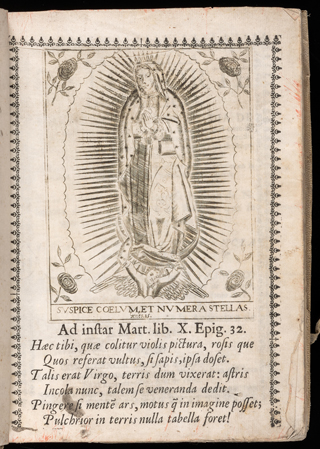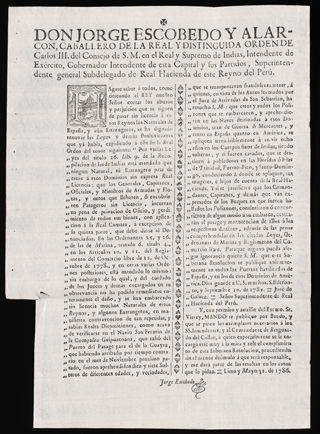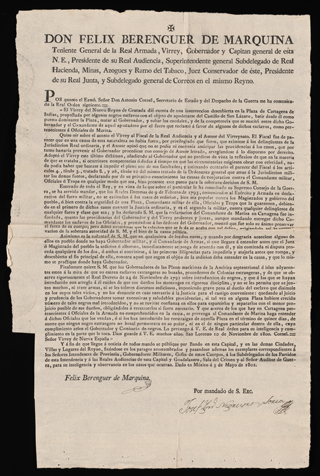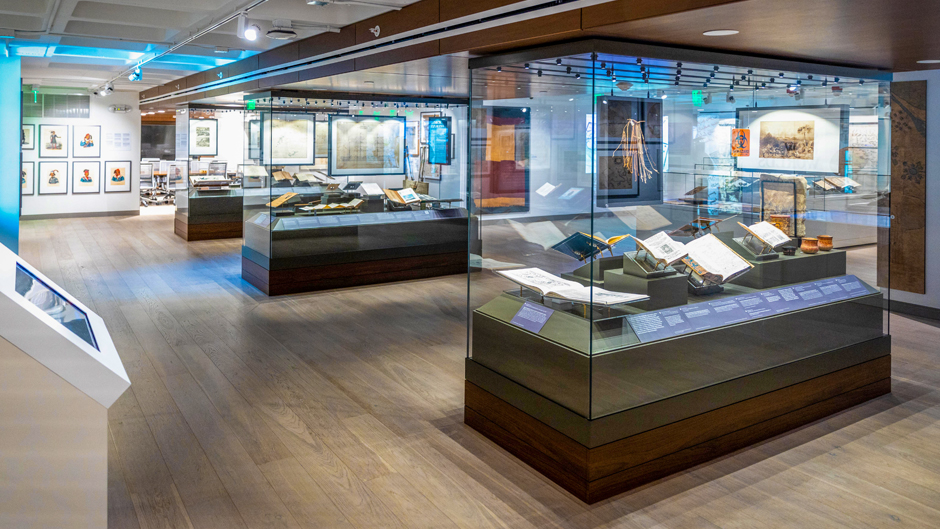Jay I. Kislak—aviator, businessman, philanthropist, and history enthusiast—was a passionate collector of pre-Columbian artifacts as well as maps, books, and other documents that help tell the story of the history and culture of the early Americas.
As founder of the Jay I. Kislak Foundation, he donated thousands of items to the Library of Congress, Miami Dade College, and the University of Miami. The University’s collection is housed in the spacious Kislak Center at the Otto G. Richter Library on the Coral Gables Campus.
During a Zoom presentation on July 29 called “Deep Dives: The Jay I. Kislak Collection: The Past, Present, and Future,” the Kislak Collection manager, Arthur Dunkelman, and Kislak Chair and Curator Daniel Arbino, were joined by Carol Damian, art historian and curator of the Kislak Center at Miami Dade College, to discuss the collection and its future.
Dunkelman, who worked with Kislak for more than 30 years, said Kislak did not know much about the Americas when he was in school in Hoboken, New Jersey, where he grew up. It was when he got to the University of Pennsylvania that he began to see the world in a different way. When Kislak moved to Miami in the 1950s and established his private mortgage company, he became a passionate collector.
“Jay had a need, a desire, a yearning to continue his education, and it was his passion to collect materials on the Americas, travels and exploration, as well as Florida,” Dunkelman said.
Arbino said that to celebrate the legacy and spirit of Kislak, the University has continued to expand the collection utilizing an endowment Kislak established. Going forward, the collection will continue to focus on the Americas, with a strong commitment to the Black Diaspora and Indigenous voices.
“I think this is a good way to honor Jay’s vision and his own curiosity as someone who was very interested in this side of the globe,” said Arbino.
A few of the items acquired in the past six months include:
‘La Estrella del Norte de México’
 One of the first women publishers in Mexico, María de Benavides, published this book in 1688, in the aftermath of a tumultuous period in Mexico. Written by a Jesuit priest named Francisco de Florencia, the book tells the tale of the apparition of the Virgen de Guadalupe and served as a way to indoctrinate Indigenous populations by blending local traditions with Catholic iconography.
One of the first women publishers in Mexico, María de Benavides, published this book in 1688, in the aftermath of a tumultuous period in Mexico. Written by a Jesuit priest named Francisco de Florencia, the book tells the tale of the apparition of the Virgen de Guadalupe and served as a way to indoctrinate Indigenous populations by blending local traditions with Catholic iconography.
A Colonial Government Broadside
 A broadside is a one-sided sheet of paper which was posted on city walls for public viewing. The viceroy of Lima, Peru, wrote this government decree in 1786 as a cautionary tale of seven stowaways found on a merchant ship. As punishment, they were sent to Florida, Trinidad, Puerto Rico, and the Dominican Republic, then colonies that the Spanish empire wanted to further populate. Interestingly, if these men were married with children, their family would be sent with them as well, which shows that a woman’s subjectivity was tied to her husband’s.
A broadside is a one-sided sheet of paper which was posted on city walls for public viewing. The viceroy of Lima, Peru, wrote this government decree in 1786 as a cautionary tale of seven stowaways found on a merchant ship. As punishment, they were sent to Florida, Trinidad, Puerto Rico, and the Dominican Republic, then colonies that the Spanish empire wanted to further populate. Interestingly, if these men were married with children, their family would be sent with them as well, which shows that a woman’s subjectivity was tied to her husband’s.
A Colonial Broadside
 Published in Colombia in 1801, this broadside originated in the city of Cartagena de Indias. It spoke of an unsuccessful uprising by enslaved people and decrees that no other enslaved people would be brought from Africa since they were considered as more “rebellious.”
Published in Colombia in 1801, this broadside originated in the city of Cartagena de Indias. It spoke of an unsuccessful uprising by enslaved people and decrees that no other enslaved people would be brought from Africa since they were considered as more “rebellious.”

